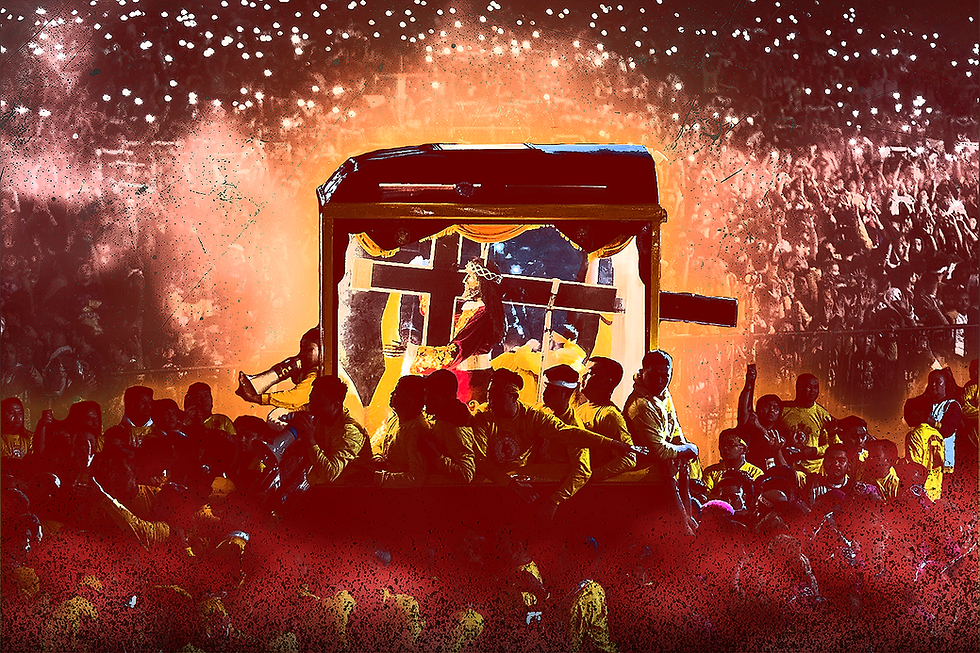What Pushes Us to Stay in the Closet
- The Communicator
- Jun 5, 2024
- 4 min read
Do we owe anyone an explanation of who we truly are?

Every member of the LGBTQIA+ community has their own “coming out” story—telling their friends and loved ones that they are “not straight” and that their romantic attraction, sexual orientation, and gender identity and expression are different from the conventional.
In whatever way they are conveyed, these confessions—sometimes confrontations—are welcomed with different emotions. For fortunate ones, whether it is with a warm hug, a touch of drama and crying, or just a simple “we already know,” it is met with acceptance. While for some, it is met with disappointment that sometimes leads to anger and, worse, violence.
So for those who have yet to gather the courage to face this uncertainty, know that no one is rushing you; you are entitled to do it at your own pace.
A Closet Built with Fear
From the bedrooms where we hid while catwalking with blankets and curtains as our long evening gowns, to the mirrors we faced while secretly putting lipstick on our then-small lips, to the select people with whom we freely expressed ourselves, a closet is a familiar place to everyone in the community—it was home; it was our little safe space.
But the mere existence of this safe space and the fact that it is hidden are manifestations of its absence in the real world. What is really out there that forces us to close the closet’s door until, if there is, the right time comes?
Liking pink as a boy and playing with toy cars as a girl seem unforgivable sins for many. Reasons as simple as interests and body language subject even kids—who are still discovering themselves—to unsolicited comments and bullying.
“I’m just scared of how society might react,” says Bruno, who has yet to find the courage to come out. This fear continues to imprison him in the closet—where he finds more freedom.
Moreover, Joseph, a 21-year-old gay man from Quezon City, believes that the closet exists because of how society treats the community.
“Kaya pinangungunahan ng takot na ma-reject o ma-judge,” Joseph added.
The fear of knives and bullets disguised as looks and words built this closet that has been imprisoning colors for years, and the fear of looks and words becoming knives and bullets pushed some to stay inside forever.
The small teasing from cousins and classmates from elementary school grew with us. The words got sharper, looks got colder, and touches were harsher. While the memories of the old alienating “little jokes” still haunt us, we step into a bigger battlefield—into a bigger war that the community has been fighting since forever.
The Search for Safe Spaces
The Williams Institute ranks the Philippines 36th out of 175 countries in terms of social acceptance of the LGBTQIA+ community. At the same time, at least 70% of Filipinos agree that the LGBTQIA+ community is trustworthy and has contributed a lot to society.
However, the fate and stories of Jennifer Laude and others, whose names many of us might have already forgotten due to the justice they did not receive, contradict this positive ranking. Transwomen students who had to cut their hair shorter just to be enrolled in their colleges, same-sex couples who had to keep their romantic relationships hidden from demeaning looks, and kids who were shamed for not being “normal” disprove such statistics.
As hate crimes and injustices against the community persist, the search for safe spaces is still nowhere near over. Now that the Sexual Orientation, Gender Identity, Gender Expression, or Sex Characteristics (SOGIESC) Equality Bill, which aims to protect us from SOGIE-based discrimination, has yet to see light, the community relies solely on local anti-discrimination ordinances from a few cities and provinces.
Will the time when the world is a safe space for each of us ever come?
The Coming Out Narrative
Coming out began as a call for the community to start their fight for liberation by declaring their homosexuality and joining the lifelong struggle.
With the amount of courage one must have to do so, it is celebrated. With the risk and danger it puts people in, it becomes a rite of passage, a brave move that frees them from several chains and shackles.
So what do we do when the closet is made of glass and transparent?
We let them tell their stories; we let them speak their truth. The closet made of glass is not a call for anyone to break it; likewise, it being transparent does not make it okay for any of us to just reveal what we see.
As our fight for a safer world continues, may we become the safe space we aspire to have. This includes not screaming other people’s colors and letting them find their own voice.
The organized celebration of pride and colors may only last for a month every year, but our fight for equality and justice is lifelong.
May we scream our pleas loud and raise our fists high until we have a world where we do not have to explain ourselves and where a closet is just a room for clothes and not a prison where we feel and have more freedom than we do when we are outside.
Article: Charles Vincent Nagaño
Graphics: Aldreich Pascual







Comments